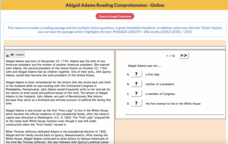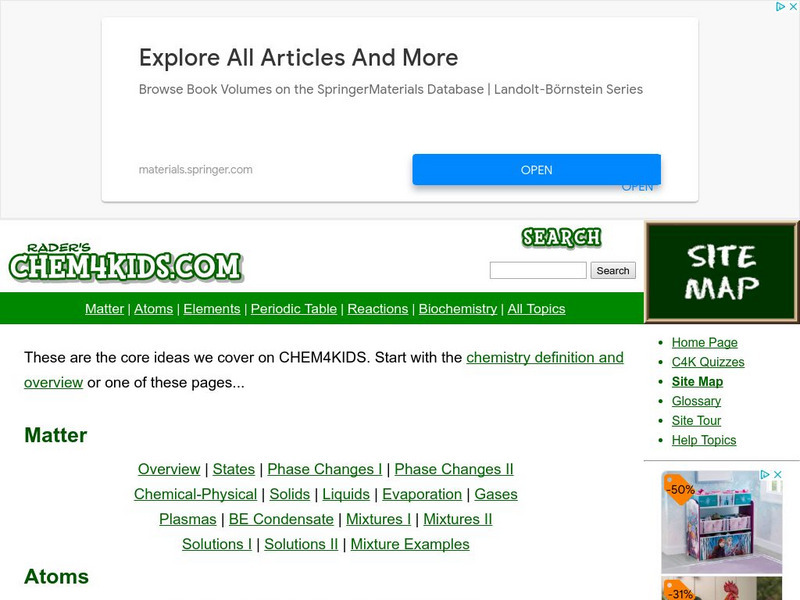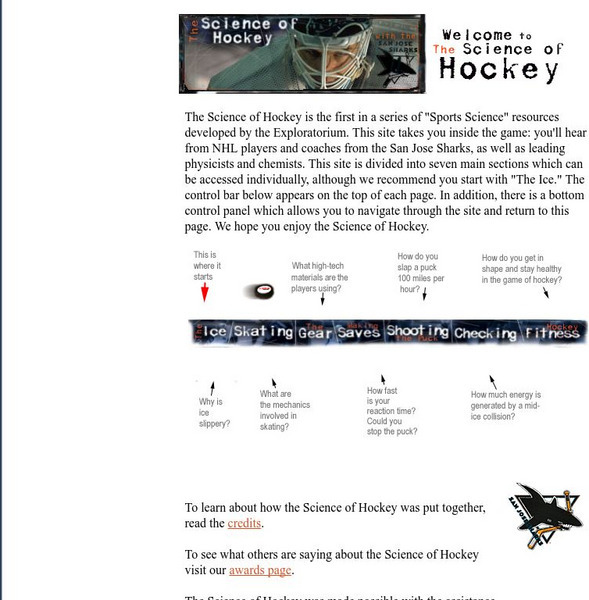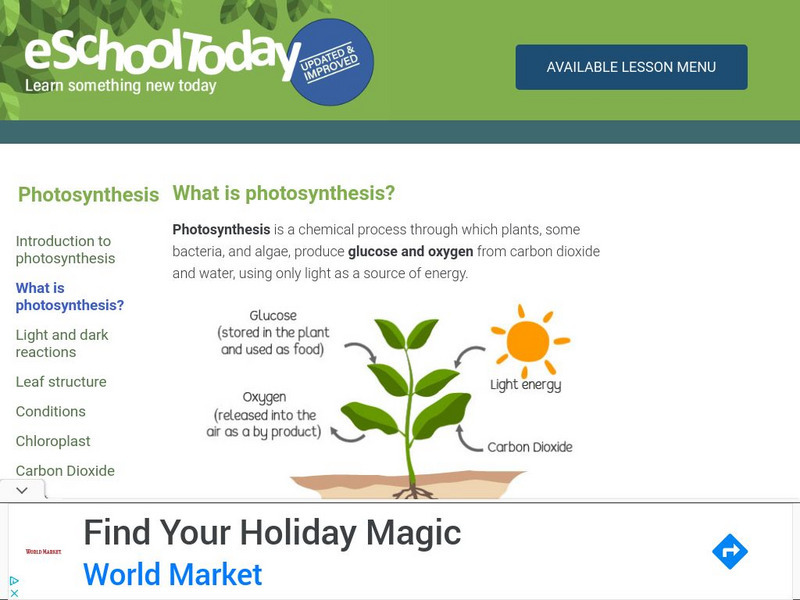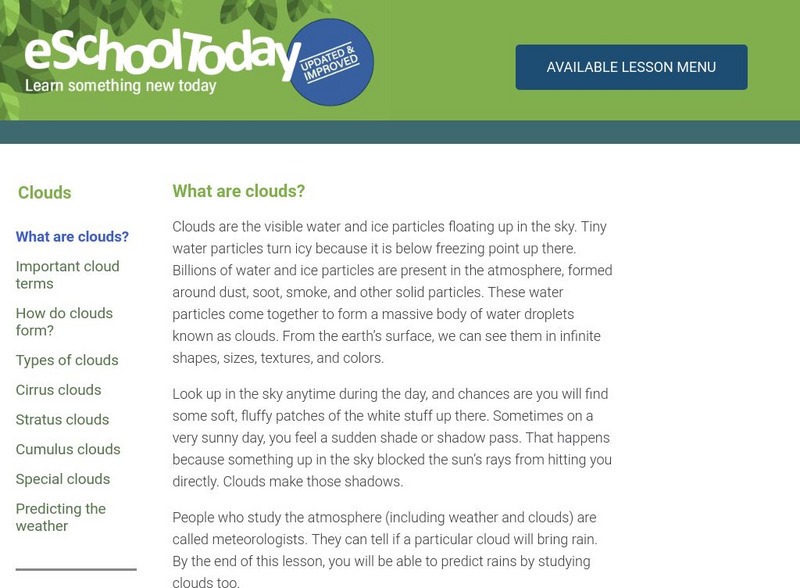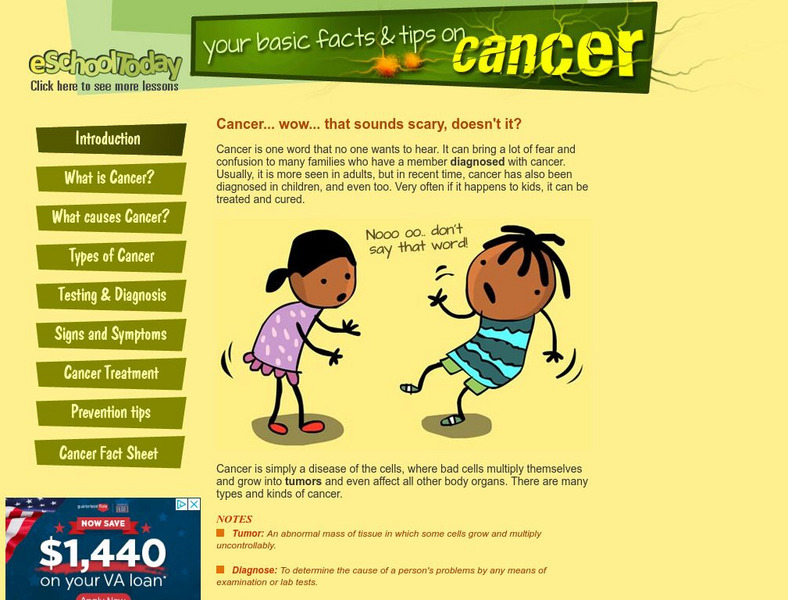Core Knowledge Foundation
The Civil War
A student reader shares information about the history of slavery, the Civil War, President Abraham Lincoln, women's contributions to the war, the Emancipation Proclamation, and reconstruction.
Mr. Nussbaum
Boston Tea Party
Scholars test their reading comprehension skills with an interactive practice. After reading about the Boston Tea Party, learners answer 10 multiple-choice questions. A progress report details their work.
Mr. Nussbaum
Alexander Graham Bell
An interactive practice challenges scholars to read an informational text then answer nine questions. The topic of the text is Alexander Graham Bell. Questions are a mix of multiple-choice and fill-in-the-blank.
Mr. Nussbaum
Abigail Adams
Ten multiple-choice questions follow a short informative reading about Abigail Adams. Feedback appears instantly and ends with a detailed report.
Concord Consortium
Concord Consortium: Stem Resources: Earthquakes Around the World
In this interactive, students manipulate a computer model that shows where earthquakes and volcanic eruptions have occurred since 1960, to make predictions, collect data and look for patterns. Includes career connection, and a question...
Concord Consortium
Concord Consortium: Stem Resources: Greenhouse Light and Temperature
An interactive tool where students can create a model of a greenhouse and use a light sensor to measure the amount of light it receives from a lamp at various times of the day. Temperature is also measured. Data is plotted on graphs,...
Chem4kids
Chem4 Kids: Chemistry Careers
Chem4Kids! looks at careers available in the large field of chemistry. Here you can explore the career of a doctor, pharmacist or pharmacologist, university researcher, forensics expert, or hazardous materials expert.
Exploratorium
Exploratorium: The Science of Hockey
If you love hockey - or are just curious about hockey - you will really like this site. There is a lot of information about the components of hockey. You can learn what equipment is necessary, how slapshots are made, and how to skate...
John F. Kennedy Center
The Kennedy Center: Lesson: You Too Can Haiku
Here's a creative activity for young scholars to examine various haikus, and Japanese culture, then write their own haiku poem, and illustrate it using watercolors! Provides plenty of links to more information, a thorough explanation of...
Houghton Mifflin Harcourt
Harcourt: Biographies: Martin Luther King, Jr.
This biography of Martin Luther King Jr. includes a timeline and addresses the life of the civil rights leader from childhood to the legacy he left behind.
Michigan State University
Michigan State University: Digital Learning Center for Microbial Ecology: Microbe Zoo: Ag Acres
A simple overview of the important roles microbes play in agriculture. You'll learn how some microbes can be hazardous to plants while others help fertilize and build soil, and kill insects.
American Chemical Society
Inquiry in Action: Condensation
In this activity, students explore the process of condensation. After seeing water vapor condense, students will help design a test to see if cooling water vapor has an effect on the rate of condensation.
American Chemical Society
Inquiry in Action: Defining Density
Do heavy things always sink and light things always float? In this introductory demonstration and activity, students are introduced to the concept of density as they explore a rock and a wooden block in water.
eSchool Today
E School Today: Energy
Explains different kinds of energy, covering kinetic, potential, gravitational, mechanical, sound, thermal, chemical, electrical, and radiant energy. Also looks at storage, transfer, and dissipation of energy. Includes a short...
eSchool Today
E School Today: Photosynthesis
Read about photosynthesis, what light and dark reactions are, the structure of a leaf, the conditions needed for photosynthesis to occur, where and how photosynthesis takes place, and how root structure impacts on photosynthesis.
eSchool Today
E School Today: Your Revision Notes on Clouds
Learn all about clouds, how they form, the different types, and how they can be used to predict the weather.
eSchool Today
E School Today: Your Revision Notes on the Nutrients in Food
Discusses food, why we need it, and the types of nutrients that food for humans must have.
eSchool Today
E School Today: Your Cool Basics on Natural Resources
Looks at the two categories of natural resources, what they are used for, their distribution around the world, threats to natural resources, recycling and composting, and conservation.
eSchool Today
E School Today: Your Basic Facts and Tips on Cancer
Explains how cancer develops and spreads, some causes of cancer, different types, how it is diagnosed, signs and symptoms of cancer, treatments, and tips for preventing it.
eSchool Today
E School Today: All You Need to Know Obesity and Children
The issue of obesity is addressed - what it is, the causes, the health and social problems it causes for the individual, types of fats in food, reduced fat and diet foods, how to prevent it, how to help someone with a weight problem, and...
Birmingham Museums Trust (UK)
Birmingham Museum & Art Gallery: Investigate Real Egyptian Artifacts
A short list of artifacts dating back to Ancient Egypt with descriptions and images. Additionally, find links for activities, a timeline, and details of mummies to enhance study of the early civilization.
PBS
Pbs Learning Media: Gamma Ray Burst Theories
This video segment from Swift: Eyes through Time introduces and explains theories of the origin of gamma-ray bursts. [4:11]
PBS
Pbs Learning Media: Creepy Crawlies
This interactive feature from the NOVA: "Odyssey of Life" Web site explores the often unwitting relationship we share with the billions of "creepy crawlies" that reside in our bodies and in our homes.
PBS
Pbs Learning Media: Scent of an Alewife
This video segment from NOVA: "Sea Behind the Dunes" tracks the return of spawning alewife fish from the open ocean back to the freshwater streams and ponds where they were born. [3:34]





